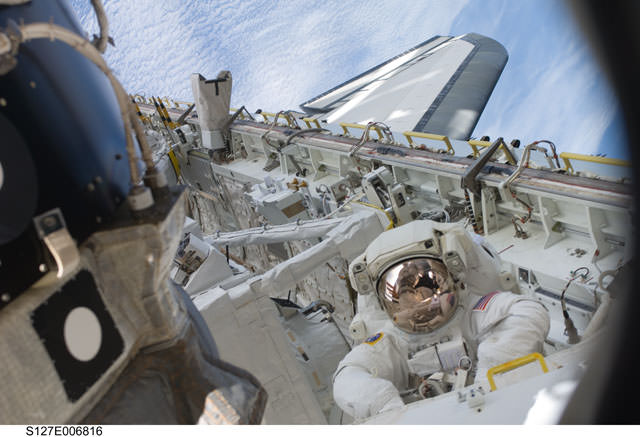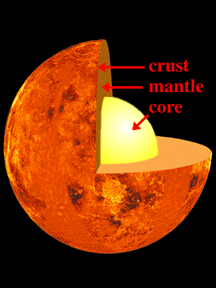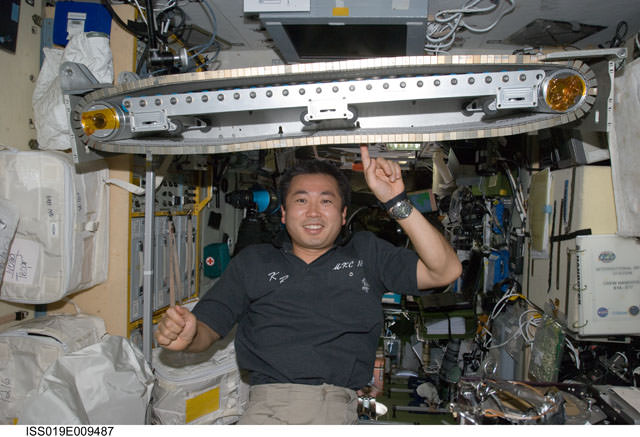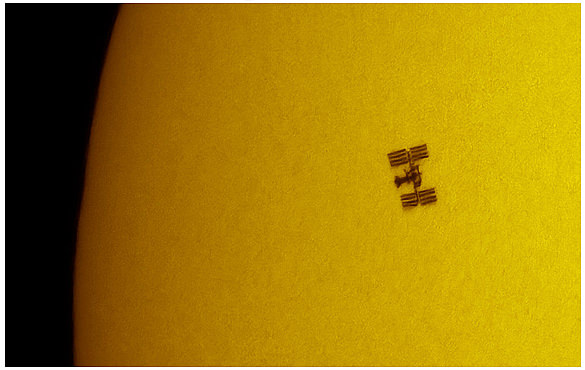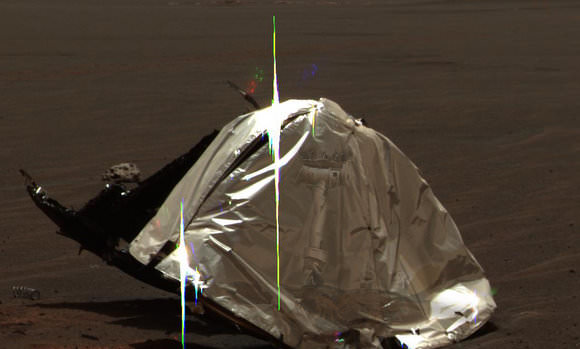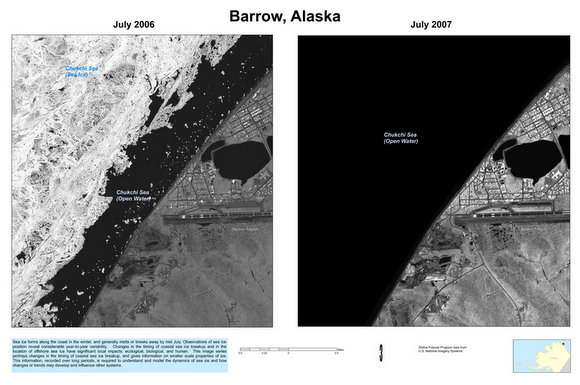[/caption]
As space shuttle Endeavour undocks from the International Space Station today (Tuesday), now is a good time to look back at the very successful STS-127 mission. Here’s some great images which tell the story of the mission. Above, astronaut Tim Kopra is pictured in the forward port side area of Endeavour’s cargo bay during the first of five planned spacewalks performed by the STS-127 crew. Kopra is now part of the ISS crew, and is staying onboard the space station to serve as flight engineer.
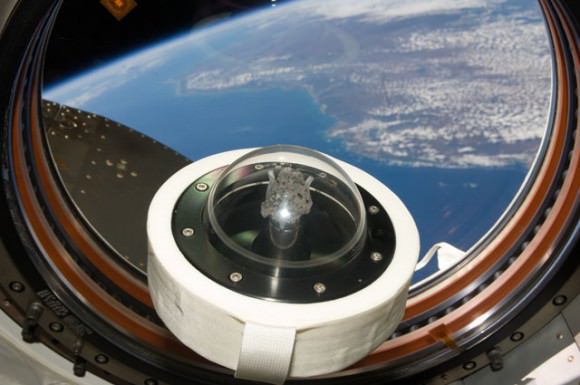
Of course, during this mission we celebrated the 40th anniversary of the Apollo 11 Moon landing. Fittingly, there was a Moon rock on board the ISS. The 3.6 billion year-old lunar sample was flown to the station aboard Space Shuttle mission STS-119 in April 2009. NASA says the rock, lunar sample 10072 serves as a symbol of the nation’s resolve to continue the exploration of space. It will be returned on shuttle mission STS-128 to be publicly displayed.
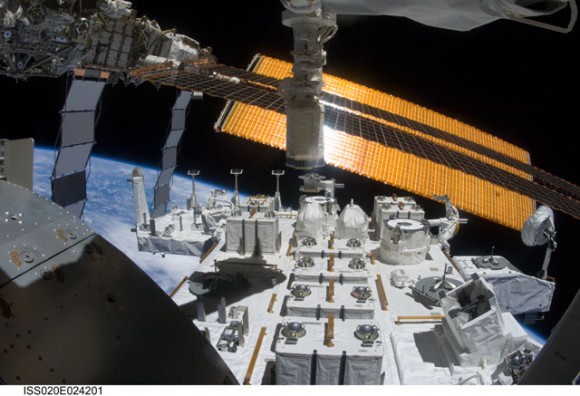
Here’s a view of the newly installed “front porch” of the Kibo lab, which is actually the Japanese Experiment Module – Exposed Facility (JEF). This platform will hold experiments designed to work outside the protective confines of the station, exposing them to the space environment. The JEF was installed by the astronauts during this mission.
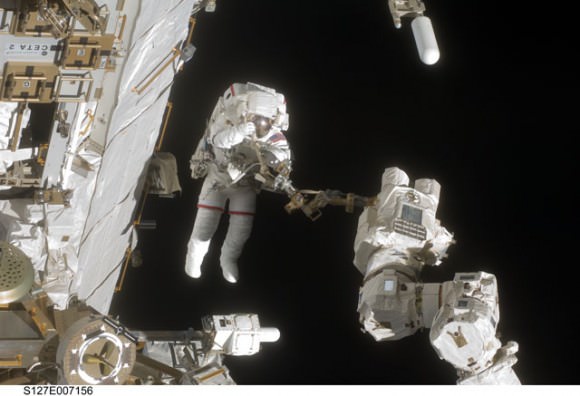
During the second STS-127 spacewalk, astronaut Dave Wolf worked outside bringing the Linear Drive Unit (LDU) and two other parts to the station’s External Stowage Platform 3 for long-term storage. Wolf is near the end of Canadarm2, which is anchored on the ISS.
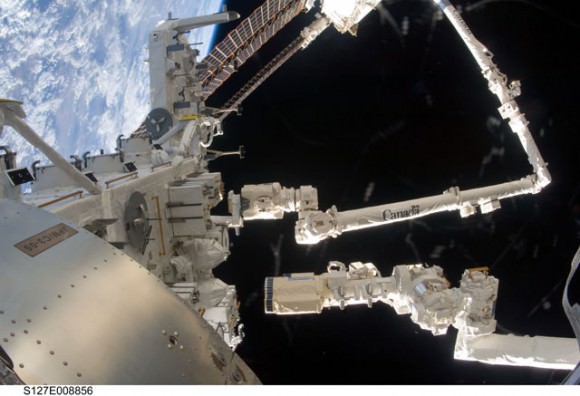
Speaking of the robotic arms, here’s a view of both the space station and space shuttle robotic arms as seen from inside the Kibo laboratory. A portion of the Japanese Experiment Module – Exposed Facility is also visible. The blackness of space and Earth’s horizon provide the backdrop for the scene.
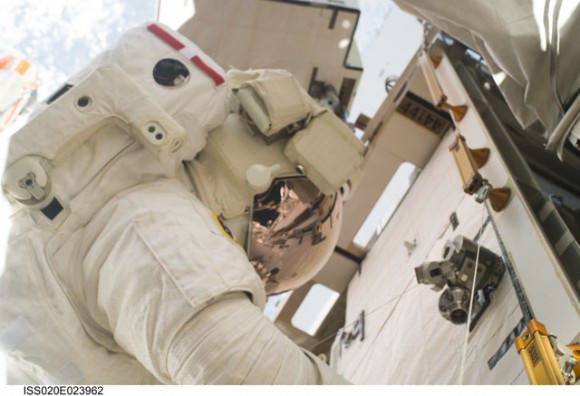
Astronaut Tom Marshburn makes his second spacewalk on July 24, along with Christopher Cassidy, out of frame. Eleven other astronauts and cosmonauts remained inside the International Space Station and the shuttle while the two astronauts worked outside.
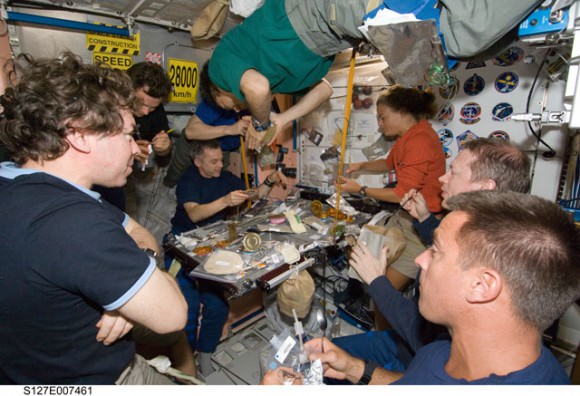
In total, there were 13 astronauts on board the ISS, a record for the amount of astronauts in one vehicle. Pictured, clockwise from bottom right, are astronauts Christopher Cassidy and Mike Barratt, with Russian Federal Space Agency cosmonaut Roman Romanenko, an unidentified crew member, Japanese Aerospace Exploration Agency astronaut Koichi Wakata (floating above), Canadian Space Agency astronauts Robert Thirsk and Julie Payette, European Space Agency astronaut Frank De Winne, and astronaut Christopher Cassidy. Either out of frame or not clearly seen are astronauts Mark Polansky, Doug Hurley, Dave Wolf, Tim Kopra and Tom Marshburn, plus Russian Federal Space Agency cosmonaut Gennady Padalka.
This screen shot shows the ISS as seen as Endeavour departed from the station on July 28. The views of both the ISS and shuttle were stunning. We’ll post the high-resolution versions when they become available. Notice the shadow of the space shuttle on the space station solar arrays! Amazing!

And now we’re back to the beginning of the mission. Liftoff for the STS-was at 6:03 p.m. (EDT) on July 15, 2009 from launch pad 39A at NASA’s Kennedy Space Center. The storm clouds stayed far enough away so that Endeavour and her STS-127 crew finally on its sixth attempt. Watch a replay of the launch here.
Circumference of Venus
[/caption]
The average circumference of Venus is 38,025 km.
Need some comparison? The average circumference of Earth is 40,041 km. And then if you compare the two numbers, you find that the circumference of Venus is about 95% the circumference of Earth.
If you’ll notice at the top of the article, I specified that we’re talking about the “average circumference”. That’s the number if you average out all the circumference measurements around the planet. This is normally very important when you measure the circumference of planets since they’re often spinning quite rapidly. This rotation causes them to flatten out and bulge around the equator. This means that the equatorial circumference is larger than the circumference if you measure it from pole to pole.
The average (or mean) circumference on Earth is 40,041 km. The equatorial circumference is 40,075 km, and the polar circumference is 40,008 km. So you can see, that’s a pretty big difference, and the average is very important. But here’s the thing. Venus rotates so slowly that it doesn’t bulge at the equator. While the Earth turns once on its axis every 24 hours, Venus takes 243 days to complete a day – that’s even longer than a year on Venus!
Need your numbers in miles? No problem. The circumference of Venus in miles is 23,628 miles.
We have written many articles about Venus for Universe Today. Here’s an article about Venus’ wet, volcanic past, and here’s an article about how Venus might have had continents and oceans in the ancient past.
Want more information on Venus? Here’s a link to Hubblesite’s News Releases about Venus, and here’s NASA’s Solar System Exploration Guide to Venus.
We have recorded a whole episode of Astronomy Cast that’s only about planet Venus. Listen to it here, Episode 50: Venus.
Density of Venus
The density of Venus is 5.204 grams per cubic centimeter.
Need some kind of comparison? The density of Earth is 5.515 g/cm3. So Venus is definitely less dense than Earth. And it’s even less dense than Mercury. Of course, it’s much more dense than any of the outer planets, like Jupiter or Saturn.
Scientists think that Venus has an interior structure similar to Earth, with a metal core, rocky mantle, and an outer crust. But these assumptions come purely from the density calculations. Here on Earth, scientists study the interior structure of the planet by using seismographs, and studying how seismic waves from earthquakes travel through the Earth. Since the surface of Venus is hot enough to melt lead, there’s no way to leave scientific equipment on the surface for any period of time to study the interior of the planet.
With its lower density, Venus has a lower mass than Earth. In fact, the mass of Venus is only about 81% the mass of Earth. And it’s also a little smaller than Earth. This means that the surface gravity of Venus is only 90% of what you would experience on Earth.
We have written many articles about Venus for Universe Today. Here’s an article about Venus’ wet, volcanic past, and here’s an article about how Venus might have had continents and oceans in the ancient past.
Want more information on Venus? Here’s a link to Hubblesite’s News Releases about Venus, and here’s NASA’s Solar System Exploration Guide to Venus.
We have recorded a whole episode of Astronomy Cast that’s only about planet Venus. Listen to it here, Episode 50: Venus.
Axis of Venus
[/caption]
The axial tilt of Venus is 177.3°. That’s a bit of a confusing number, so let’s figure out what’s going on here. Compare this number to the Earth’s axial tilt of 23.5°. Our tilt gives us such different seasons between summer and winter, so you’d expect that Venus’ much larger tilt would cause more extreme seasons.
Nope. But if you remember your high school geometry, you’ll realize what’s going on. A full circle is 360°. Half a circle is 180°. So if you subtract 177.3° from 180°, you get 2.7°. In other words, Venus is actually only tilted away from the plane of the ecliptic by only 2.7°. Venus is actually completely upside down – almost perfectly upside down.
In fact, Venus is the only planet in the Solar System that rotates backwards compared to the other planets. Seen from above, all the planets are turning in a counter clockwise direction. That’s why Asia sees the Sun first, then Europe, and then the Americas. Mars is the same, and so is Mercury, but Venus is rotating clockwise.
It’s possible that Venus was knocked upside down by a massive impact early in its history. it’s also possible that Venus just slowed down through tidal locking with the Sun, and was somehow spun slowly backwards through its interactions with the other planets.
Here on Earth, the axial tilt is responsible for the seasons. When it’s winter in the northern hemisphere, the north pole is tilted away from the Sun, and less of the Sun’s radiation falls on every square meter of ground. The opposite is true in the summer. Without a significant axial tilt, Venus doesn’t experience seasons like this. The temperature of Venus is a nice even 462°C everywhere on the whole planet.
We have written many articles about Venus for Universe Today. Here’s an article about Venus’ wet, volcanic past, and here’s an article about how Venus might have had continents and oceans in the ancient past.
Want more information on Venus? Here’s a link to Hubblesite’s News Releases about Venus, and here’s NASA’s Solar System Exploration Guide to Venus.
We have recorded a whole episode of Astronomy Cast that’s only about planet Venus. Listen to it here, Episode 50: Venus.
Long Duration Space Underwear
[/caption]
As Japan’s first astronaut to spend long duration missions on board the International Space Station, Koichi Wakata has had the opportunity to do all sorts of interesting experiments the past few months. For example, he conducted several different cellular growth and crystal growth experiments, and has even flown a magic carpet in space. One other experiment has been – shall we say – kept under wraps. Wakata has been wearing the same underwear on board the ISS for two months.
“(For) two months I was wearing these underwear and there was no smell and nobody complained,” Wakata, speaking in Japanese, said through an interpreter during a press conference this weekend from the ISS. “I think that new J-ware underwear is very good for myself and my colleagues.”
Wakata has been wearing special underwear and other clothing called “J-ware” designed for the Japanese space agency. According to an article in Discovery News, the clothes are treated with antibacterial and deodorizing materials. In addition to odor control, the clothes are designed to absorb water, insulate the body and dry quickly. They also are flame-resistant and anti-static — as well as comfortable and attractive.
Typically, clothes can only be worn for a few days in space, and especially the clothing worn by astronauts as they exercise. Since there’s no laundromat in space, the clothing is discarded as garbage.
Astronaut Takao Doi, who flew with a shuttle crew last year to deliver Japan’s Kibo laboratory to the station, exercised as much as his crewmates, but his clothes stayed dry.
Wakata’s clothes include long- and short-sleeved shirts, pants, shorts and underwear. Special socks have a separate pouch for the big toes so the astronauts can use their feet like an extra pair of hands, helpful for anchoring themselves on the floor while doing work on the station.
Originally, Wakata was scheduled to wear the underwear for just a couple of weeks. But obviously, he decided to go the long duration route.
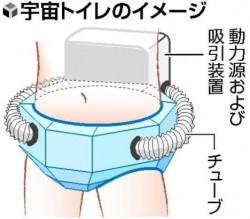
At least he wasn’t testing this other option proposed by JAXA. Read more about these special underwear here.
Wakata heads home with the crew of the STS-127 mission, undocking from the ISS today. The first landing opportunity is Friday, July 31.
Sources: Discovery News, Free Space
Altman: Augustine Commission Allowing Constellation Program to “Take a Breath”
[/caption]
Astronaut Scott Altman, commander of the recent servicing mission to the Hubble Space Telescope said the independent review of NASA’s current plans is allowing both the space agency and the nation to step back, contemplate and plan the future. “The new administration wants to take a good hard look at the direction of future of the space program and I endorse that,” Altman said. I think we’ll come out of this with a more focused and hopefully a stronger movement forward. And the folks working on Constellation have the chance to take a breath while the Augustine Commission is at work and I’m looking forward to hearing what they have to say.”
Altman made his comments during a visit to the Lakeview Museum of Arts and Sciences in Peoria, Illinois, a place he visited as a child, which he said inspired him to “reach for the stars.”
The veteran astronaut worked on helping to develop the Constellation program before he was assigned to the Hubble servicing mission, and he looks forward to returning to that task, whether it be the Ares and Orion vehicles or another incarnation of the next space vehicles. When asked about his future plans, Altman said. “I think I will go back and work on the next generation vehicle as we work those designs. Will I get to stick around and maybe fly them? I don’t know, that’s another five or six years — we’ll see. But I’m loving what I’m doing and it’s great to be an astronaut at NASA.”
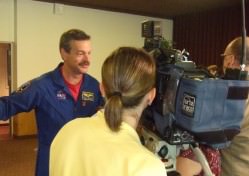
The Augustine Commission is holding an open meeting on Tuesday in Houston, and another on July 29 in Huntsville, Alabama, to allow public input on the course NASA should be taking. Altman likes that the Commission is readily taking public comment.
“It’s always good,” he said. “The space program is a manifestation of the country’s national will, what we want to do. I think it is important that NASA stay connected with people. There should be a place where the public can let NASA know how they think we’re doing. And we (NASA) need to make sure we let them know what we are doing, so we need to make sure the communication goes both ways.”
Hubble Images of Jupiter Impact Site
Altman was asked if he had seen the first Hubble image released to the public since the servicing mission, a surprise observation of the recent impact on Jupiter. “The pictures they took of Jupiter were awesome,” he said “The other great thing about seeing those pictures is that we know our repairs worked, so it’s nice to see the success of our mission.”
The Wide Field Camera 3, which took the Jupiter image, was one of the first tasks for Altman and his STS-125 crew to repair, and the repair provided some initial drama for the mission. “I thought it wasn’t going to come out,” he said. “We came so close to being stuck with our very first thing not working out but I was thrilled when the old camera came out and the new went in. And now to hear that it’s working they way it should, we’re all thrilled.”
Altman said he and his crew were able to see other new images taken by the refurbished Hubble Space Telescope while at a visit to the Space Telescope Science Institute last week, and hinted the images may be released to the public soon. “We did get a sneak peak at some of the images they are starting to take and I think when they have an early release of them, you should all watch because it’s going to be incredible,” he said.
Mission Memories
Altman said the most memorable part of the STS-125 mission was when crewmate Mike Massimino had to tear a handle off the telescope in order to proceed with the repair of the STIS instrument. Massimino and spacewalking partner Michael Good spent hours struggling to remove a stuck bolt from a handrail on the telescope. Finally mission control told Massimino to just tear the handrail off.
“I was with the rest of the crew at the edge of the window looking out when Mike broke the handle off,” said Altman. “That was pretty amazing to watch. But I think it shows the benefit of having people in space who can respond to things that you didn’t think were going to happen.”
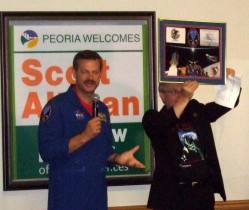
Altman presented the museum with pictures and an item he flew in space. “When we fly in space we are able to take a few things with us,” he said. “One of the things that I took along was this Illinois flag. So it’s got 5.3 million miles on it, 197 orbits, but no frequent flyer miles! But I wanted to present it to the museum along with a few pictures from the mission as a way of saying thanks for the inspiration that started here for me, and starts for so many other people. And, as you kids here look to follow your dreams and reach for the stars, you never really know where you might end up, but there are some pretty cool places out there that you might visit, I know I have. It’s really an honor for me to be back here. I’m so thrilled and I just want to say thank you to the museum for the great work that you do, and I know you’re about to do a lot more in the near future in the new facility.
The Lakeview Museum will be part of a new 81,000-square-foot Peoria Riverfront Museum that will feature a 3-D IMAX Theatre, state-of-the-art planetarium, and other educational and cultural activities.
Stunning Image of ISS and Endeavour Transitting Sun
[/caption]
Wow! Take a look at this image captured by award-winning French astrophotographer Thierry Legault. The visible detail of the shuttle and parts of the International Space Stations is absolutely amazing! If you remember, Legault also took images of space shuttle Atlantis and the Hubble Space Telescope transiting the sun back in May during the HST servicing mission.
Legault is an engineer who lives near Paris. He started his digital imaging in 1994, and currently uses a SBIG STL-11000M CCD camera with AO-L system that is equipped with large and narrow band filters. He also uses a reflex Canon 5D, webcams from Philips as well as Astrovid video cameras.
He has written two books: “The New Atlas of the Moon” with Serge Brunier (Firefly) and “Astrophotographie” (Eyrolles), and is featured in a new book by Robert Gendler, “Capturing the Stars: Astrophotography by the Masters.”
Visit Thierry’s website for more great images!
Source: OnOrbit
Astro Art of the Week: Rover Picture That Never Was
[/caption]
This week’s Astro Art of the Week is one of my favorite creations from my pal Stuart Atkinson, and it is a picture that never happened. Oh, the Opportunity rover did take a picture of its crumpled backshell on the surface of Mars, as seen above. But look closer: Stuart has added a reflection of the rover in the shiny metal — a self-portrait that could have been taken had the rover come close enough. Stuart writes on his blog Cumbrian Skies:
“My favourite “picture that never was” is a self-portrait of Oppy that she could… possibly… perhaps… maybe… have taken as she rolled around the edge of Endurance Crater, some 350 days after landing on Mars. How cool would that have been?!?! A picture of a Mars rover taken BY a Mars rover! Okay, so it would have been a bit distorted, and blurry, but still, what a picture it would have been. A killer image to be sure. I remember thinking at the time “Go on, take the picture, it’ll be amazing! It’ll be EVERYWHERE!”, and being very frustrated and disappointed when they didn’t.
“But I can understand why they didn’t risk it. If I was in charge of a mega-expensive Mars rover, just 350 days into its mission, I wouldn’t have been too keen to drive it into a veritable minefield of bits of metal that could have got stuck in its wheels, snagged cables or worse. No, they absolutely did the right thing. But still… all these years later I can’t help wondering what that picture would have turned out like… Maybe something like this…”
Thanks Stu, for sharing your image!
And remember, we’re still looking for a good name for this new feature of using space or astronomy images created with digital image editing software, so submit suggestions in the comments. And if you like to fool around with image editing, consider submitting one of your own. Submit them to Nancy here.
Declassified Ice Loss Images
[/caption]
Last week the US government released more than a thousand intelligence images of Arctic ice that have been used to help scientists study the impact of climate change. The images were taken by spy satellites, as part of the Medea program, which lets scientists request spy pictures from environmentally sensitive locations around the world. After they were taken, the Bush Administration released the photographs to the scientists but deemed them “unsuitable for public release.” Earlier this month, the National Academy of Sciences recommended the Obama Administration declassify the photos, which they did within a few hours of the recommendation.
Various blogs are saying these dramatic images are faked, but since they are available through the US Geological Survey , that hardly seems likely. Over 700 images show changes of sea ice in various recent years from six sites around the Arctic Ocean, with an additional 500 images of 22 sites in the United States.
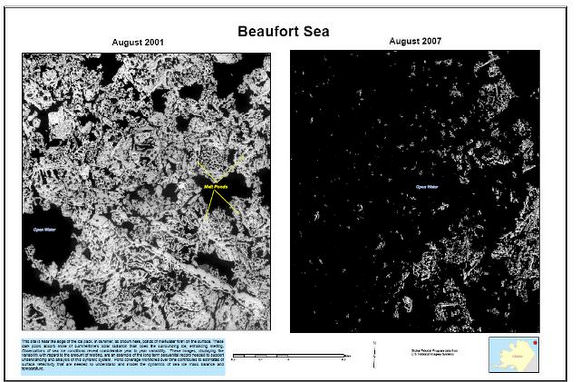
Scientists request ice pictures to be taken by intelligence satellites because the resolution is much greater, in some cases, than other available satellite images. According to Reuters, the newly declassified Arctic images have a resolution of about 1 yard (1 meter), a vast improvement on previously available pictures of sea ice which have a resolution between 15 and 30 meters.
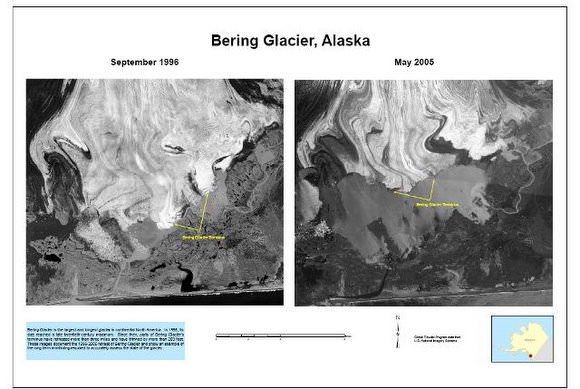
Sources: Reuters, USGS, TrueSlant
Galaxy Zoo Discovers New Group of Galaxies: ‘Green Peas’
[/caption]
Citizen scientists from the Galaxy Zoo project have discovered rare galaxies they’re calling the “Green Peas.” They’re small in size, bright green in color, and proficient at churning out new stars — plus, they could reveal unique insights into how galaxies form stars in the early universe.
The newly discovered galaxies appear in the image at left, from Carolin Cardamone and the Sloan Digital Sky Survey.
“These are among the most extremely active star-forming galaxies we’ve ever found,” said Cardamone, an astronomy graduate student at Yale University and lead author of a new paper on the discovery. The results will appear in an upcoming issue of the Monthly Notices of the Royal Astronomical Society.
Galaxy Zoo users volunteer their spare time to help classify galaxies in an online image bank. Cardamone said of the one million galaxies that make up Galaxy Zoo’s image bank, the team found only 250 Green Peas.
“No one person could have done this on their own,” she said. “Even if we had managed to look through 10,000 of these images, we would have only come across a few Green Peas and wouldn’t have recognized them as a unique class of galaxies.”
The Green Peas boast “some of the highest specific star formation rates seen in the local Universe,” write Cardamone and her co-authors, “yielding doubling times for their stellar mass of hundreds of millions of years.”
The authors say evidence points to recent or ongoing mergers, adding that the Peas are similar in size, mass, luminosity and metallicity to Luminous Blue Compact Galaxies.
“They are also similar to high redshift UV-luminous galaxies, e.g., Lyman-break galaxies and Lyman-alpha emitters, and therefore provide a local laboratory with which to study the extreme star formation processes that occur in high-redshift galaxies,” they write.
The galaxies, which are between 1.5 billion and 5 billion light years away, are 10 times smaller than our own Milky Way galaxy and 100 times less massive. But they are forming stars 10 times faster than the Milky Way.
Kevin Schawinski, a postdoctoral associate at Yale and one of Galaxy Zoo’s founders, said the Green Peas would have been normal in the early universe, “but we just don’t see such active galaxies today. Understanding the Green Peas may tell us something about how stars were formed in the early universe and how galaxies evolve.”
The Galaxy Zoo volunteers who discovered the Green Peas—and who call themselves the “Peas Corps” and the “Peas Brigade”—began discussing the strange objects in the online forum. (The original forum thread was called “Give peas a chance.”)
Cardamone asked the volunteers, many of whom had no previous astronomy background or experience, to refine the sample of objects they detected in order to determine which were bona fide Green Peas and which were not, based on their colors. By analyzing their light, Cardamone determined how much star formation is taking place within the galaxies.
“This is a genuine citizen science project, where the users were directly involved in the analysis,” Schawinski said, adding that 10 Galaxy Zoo volunteers are acknowledged in the paper as having made a particularly significant contribution. “It’s a great example of how a new way of doing science produced a result that wouldn’t have been possible otherwise.”
Source: Yale University, via the American Astronomical Society press wire. The paper is here, and here is a link to the Galaxy Zoo project.

